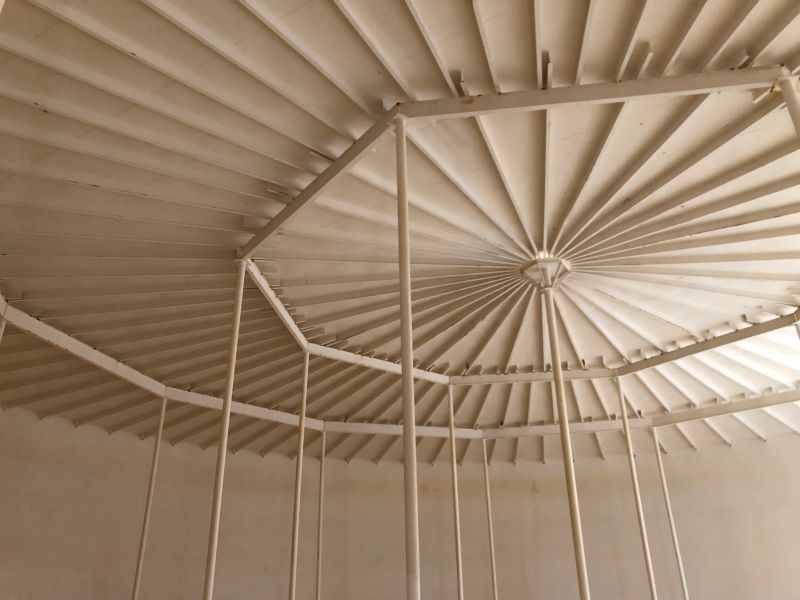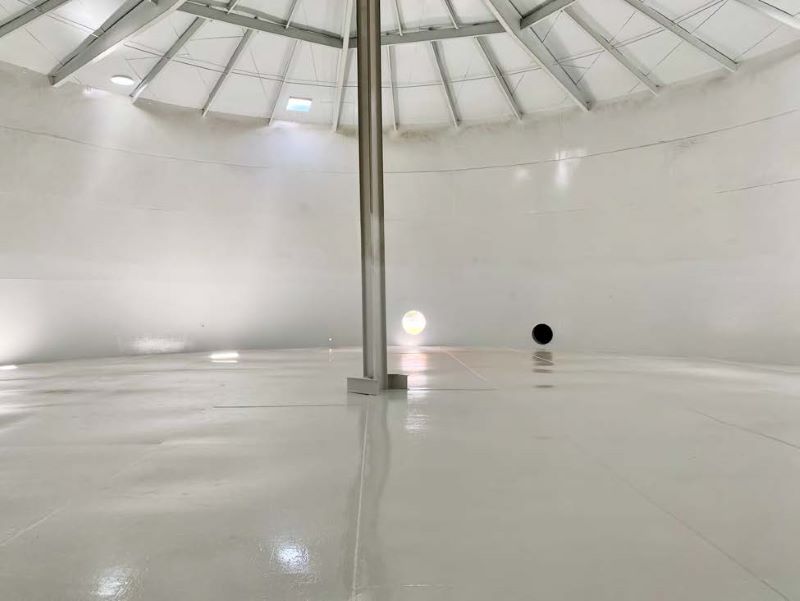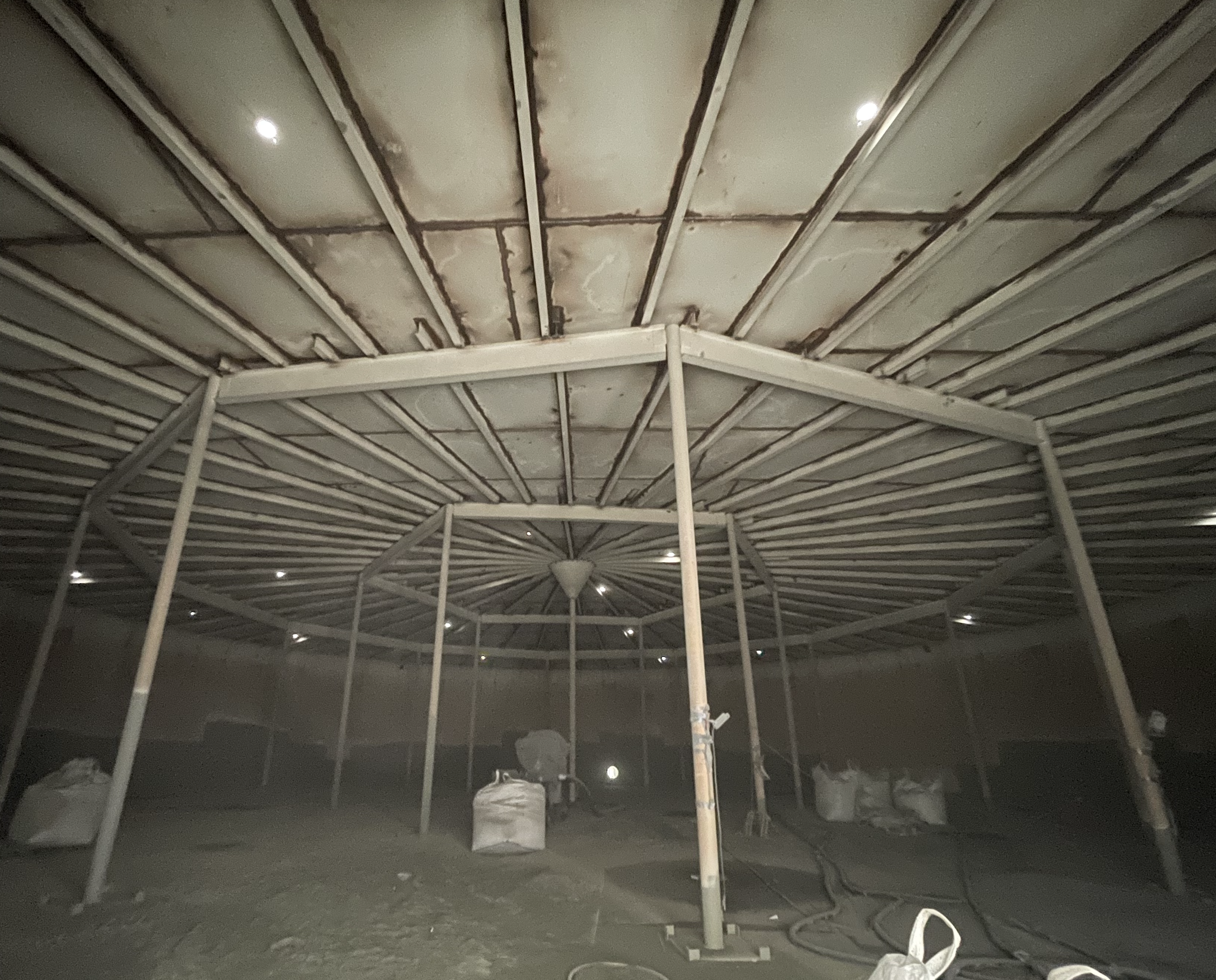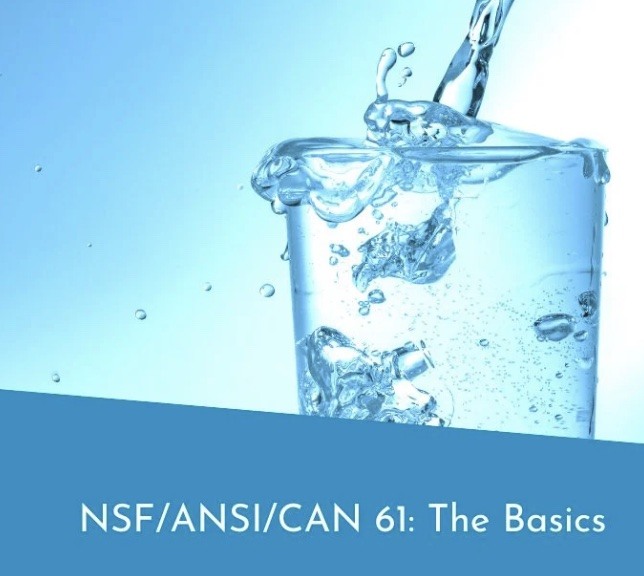
Why Interior Dry Space Coatings Are Essential for Long-Term Tank Maintenance
Discover why interior dry coatings are crucial for long-term maintenance and safety of potable water tanks, preventing corrosion and ensuring water quality.
- Rick Gilbreath
Ensuring the longevity and safety of potable water tanks requires specialized attention to their interior dry coatings.
Understanding the Importance of Dry Space Coatings in Potable Water Tanks
The interior dry coatings in potable water tanks play a vital role in maintaining the structural integrity and safety of the tank. These coatings are applied in the head space, otherwise known as the "roof and rafters" or ceiling of a water tank. They serve as a protective barrier against corrosion, which can be particularly aggressive in this area'of the tank. Unlike the immersion zone, which is constantly submerged in water, the dry area is subject to fluctuating humidity levels and temperature changes. These conditions can lead to condensation, which in turn creates an environment conducive to corrosion.
Proper application of dry coatings ensures that the tank's structure remains sound and that the water it holds remains safe for consumption. Neglecting this aspect can result in costly repairs and pose health risks due to potential contamination.
Vapor Space vs. Immersion Zone: Key Differences
The vapor space, or the dry area, and the immersion zone within a potable water tank have distinct environmental conditions that necessitate different protective measures. The immersion zone is continuously in contact with water, making it critical to use coatings that are highly impermeable and resistant to water and chemicals. These coatings must be formulated to withstand constant exposure to moisture and potential chemical reactions that can occur in the presence of various minerals and substances found in water. The immersion zone's environment demands a robust barrier to prevent the leaching of harmful substances into the water, ensuring that the water remains safe for consumption over time.

On the other hand, the vapor space is exposed to air, condensation, and fluctuating temperatures, creating a unique set of challenges for maintaining the tank's integrity. This area is prone to different types of corrosion, such as atmospheric corrosion, which can rapidly deteriorate the tank's structure if not properly protected with appropriate dry coatings. The vapor space experiences cycles of drying and wetting due to condensation, which can lead to the formation of rust and other corrosive elements. Additionally, temperature fluctuations can cause expansion and contraction of the tank materials, further stressing the protective coatings. Therefore, selecting the right type of dry coating, like Tnemec Series 21 Epoxoline for example, is crucial to form a resilient shield against these environmental factors. This ensures that the tank remains structurally sound and capable of safely storing potable water without the risk of contamination or structural failure.
The Role of Stripe Coating in Tank Maintenance
Stripe coating is a specialized technique employed to provide enhanced protection to the most vulnerable parts of a structure, such as the edges, seams, and welds. These areas are particularly susceptible to corrosion due to their exposure to environmental stressors and the inherent structural weaknesses that can occur at joints and connections. The stripe coating method involves the application of a thicker, more robust layer of protective coating to these high-risk areas before the main coating is applied to the entire surface. This preliminary step is crucial as it ensures that the most susceptible parts of the structure receive additional reinforcement, thereby fortifying them against potential damage.

In the context of potable water tanks, stripe coating plays a critical role, especially in the vapor space, where the risk of corrosion is heightened due to exposure to air, moisture, and temperature fluctuations. The vapor space is an area that experiences cycles of condensation and evaporation, which can lead to the rapid onset of corrosion if not properly protected. By applying stripe coating to the edges, seams, and welds within this space, tank maintenance teams can ensure that these critical points are adequately shielded from corrosive elements. This additional layer of defense is not merely a precautionary measure; it is a vital component of the tank's overall protective strategy. It helps to prevent localized corrosion, which can compromise the structural integrity of the tank over time. By mitigating these risks, stripe coating effectively extends the lifespan of the tank, ensuring that it remains a reliable and safe vessel for storing potable water. This, in turn, safeguards the quality and safety of the water it contains, providing peace of mind to both the operators and the consumers who rely on the tank for their water supply.
Paying Attention to Structural Members in the Dry Area
Structural members in the dry area, such as beams, supports, and other metal components, are often overlooked in maintenance routines, yet they are crucial to the tank's overall integrity and functionality. These elements form the backbone of the tank's structure, providing essential support and stability. However, they are exposed to the same harsh conditions as the vapor space, including fluctuating temperatures, humidity, and the presence of corrosive agents. This exposure makes them highly susceptible to corrosion and structural degradation over time, which can compromise the tank's safety and efficiency.

Applying protective coatings to these structural members is not just important; it is vital for the long-term preservation of the tank. These coatings act as a shield, protecting the metal components from the damaging effects of rust and other forms of corrosion. Ensuring thorough coverage with high-quality coatings is essential to create a robust barrier that can withstand the environmental stressors present in the dry area. By doing so, the structural stability and functionality of the tank are maintained over the long term, preventing costly repairs and potential failures. This proactive approach to protecting structural members not only extends the lifespan of the tank but also ensures that it continues to safely store potable water, thereby safeguarding public health and maintaining the reliability of the water supply system.
Long-Term Benefits of Proper Interior Dry Coating Application
The long-term benefits of proper interior dry coating application in potable water tanks cannot be overstated, as they play a crucial role in ensuring the durability and safety of these essential structures. By investing in high-quality coatings and employing meticulous application processes, such as stripe coating and careful attention to structural members, tank owners can significantly extend the service life of their tanks. This not only involves selecting the right type of coating material that can withstand the specific environmental conditions within the tank but also requires skilled application techniques to ensure that every part of the tank is adequately protected. The use of advanced technologies and expert knowledge in the application process helps to create a seamless and robust protective layer that guards against the various forms of corrosion that can occur over time.
Preventing corrosion is a key factor in reducing maintenance costs, as it minimizes the need for frequent repairs and replacements, which can be both time-consuming and expensive. Moreover, ensuring that the water stored within these tanks remains uncontaminated is of paramount importance, as it directly impacts the health and safety of the communities that rely on this water supply. This proactive approach to maintenance not only safeguards the physical infrastructure of the tanks but also plays a vital role in protecting public health. Our Consultants at High Performance Coatings have been helping maintain the integrity of the portable water tanks and the purity of the water they contain for over a combined 300 years. Contact us here!

Interior Immersion Grade Coatings: Protecting...
Ensuring the longevity and safety of potable...

Custom Coating Solutions for Your Water Tank
CUSTOM COATING SOLUTIONS FOR YOUR WATER TANK
...

NSF-Approved Coatings for Potable Water Tanks
NSF-APPROVED COATINGS FOR POTABLE WATER TANKS
...